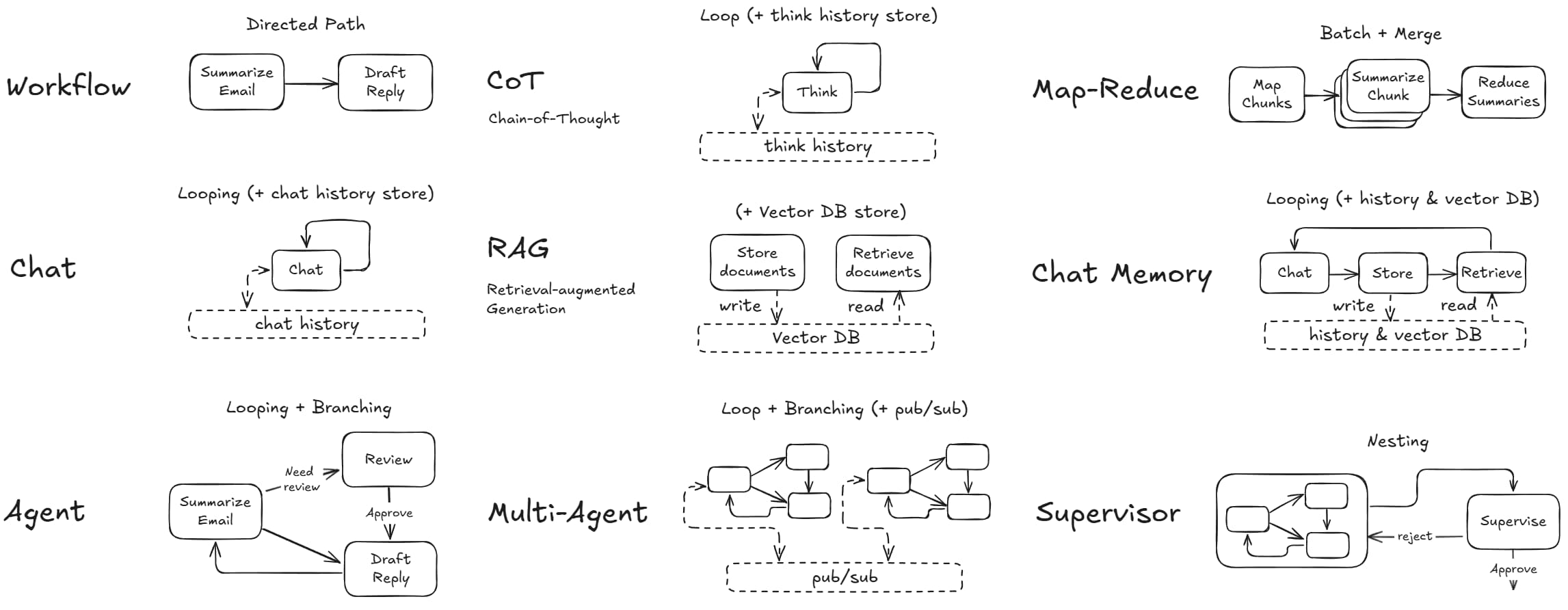Overview
Caskada supports a variety of design patterns that enable you to build complex AI applications. These patterns leverage the core abstractions of nodes, flows, and shared store to implement common AI system architectures.
Overview of Design Patterns

Caskada's minimalist design allows it to support various high-level AI design paradigms:
Retrieval-Augmented Generation for knowledge-grounded responses
Question answering, knowledge-intensive tasks
Autonomous entities that can perceive, reason, and act
Virtual assistants, autonomous decision-making
Generating outputs that follow specific schemas
Data extraction, configuration generation
Multiple agents working together on complex tasks
Collaborative problem-solving, role-based tasks
Choosing the Right Pattern
When designing your application, consider these factors when selecting a pattern:
RAG
Knowledge-intensive tasks
When external information is needed for responses
Agent
Dynamic problem-solving
When tasks require reasoning and decision-making
Workflow
Sequential processing
When steps are well-defined and follow a clear order
Map Reduce
Large data processing
When handling datasets too large for a single operation
Structured Output
Consistent formatting
When outputs need to follow specific schemas
Multi-Agents
Complex collaboration
When tasks benefit from specialized agent roles
Decision Tree
Use this decision tree to help determine which pattern best fits your use case:
Pattern Composition
Caskada's nested flow capability allows you to compose multiple patterns. For instance:
This composition enables powerful applications that combine the strengths of different patterns. For example, an agent might use RAG to access knowledge, then apply chain-of-thought reasoning to solve a problem. Other examples include:
An Agent that uses RAG to retrieve information before making decisions
A Workflow that includes Map Reduce steps for processing large datasets
Multi-Agents that each use Structured Output for consistent communication
Implementation Examples
Each pattern can be implemented using Caskada's core abstractions. Here's a simple example of the agent pattern:
For more detailed implementations of each pattern, see the individual pattern documentation pages.
Best Practices
Start Simple: Begin with the simplest pattern that meets your needs
Modular Design: Design patterns to be composable and reusable
Clear Interfaces: Define clear interfaces between pattern components
Test Incrementally: Test each pattern component before integration
Monitor Performance: Watch for bottlenecks in your pattern implementation
By understanding and applying these design patterns, you can build sophisticated AI applications that are both powerful and maintainable.
Last updated